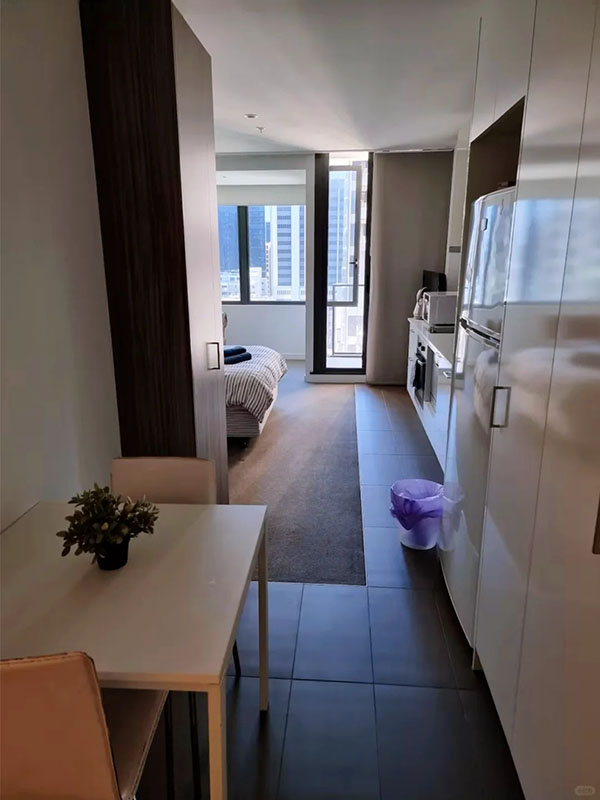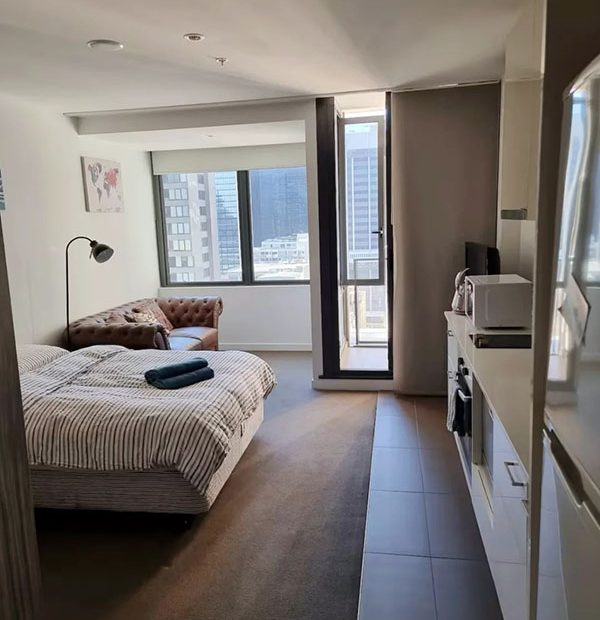I have a strong desire to invest in an apartment in Melbourne, I explored the local apartment market in depth. Along the way, I encountered countless new discoveries and profound thoughts.
Key factors for investment returns
It all started with a coffee chat with my friend Ajay. He suggested that I look into rental yields first, and I thought that was a good idea. After some in-depth research, I was pleasantly surprised to discover that rental yields for apartments are generally higher than those for houses in major cities. For example, in Sydney, the average yield for apartments is 4.0%, while that for houses is only 2.7%.

In Melbourne, the yield for apartments is even higher, at 4.7%, while that for houses is only 3.1%. This finding reminded me of what Sydney real estate agent Xiaoli described at a social gathering – the local apartment rental market is highly competitive, with tenants lining up to rent.
This made me optimistic about the prospects for apartment investment in Melbourne, and I couldn’t wait to share the news with Ajay.
Complex factors affecting return on investment (ROI)
Return on investment is undoubtedly the core issue in any investment process. After reviewing a large amount of data and case studies, I learned that the return on investment for rental properties is usually 5-10%, which is considered ideal – comparable to the average return on stock. However, there are many factors that affect the return on investment, and I have compiled the following list:
- Location: transport convenience, proximity to amenities (schools, hospitals, shopping centres) and distance from the business district.
- Property condition: the age of the building, the quality of the renovations and the overall structural integrity.
- Tenant quality: the creditworthiness, rental stability and ability to maintain the property of the tenant.
Exploring the 2% rule for rental investment
In the course of my research, I discovered the 2% rule for rental investment, which states that the monthly rent should be at least 2% of the purchase price of the property. This is a stricter standard than the 1% rule. On investment forums, people have mixed opinions about this rule.
Based on my knowledge of the Melbourne apartment market, I think it can be used as a reference, but investment decisions should not be based solely on this rule, and other factors should also be considered.
Determining a ‘good’ return on investment
Although what constitutes a ‘good’ return varies depending on individual investment strategies, location and market conditions, 6-8% is generally considered to be a solid return, while 10% or higher is excellent. I kept this benchmark in mind when evaluating the apartment project, using it to estimate potential returns while reminding myself that investment involves risk—it is unwise to blindly pursue high returns.
Comparing returns on investment in different cities
I also compared the return on investment between Sydney and Melbourne. The return on investment for Sydney apartments was 4.0%, while the return on investment for Melbourne apartments was 4.7%. The data clearly shows that Melbourne has an advantage in terms of rental yields, which further strengthens my optimism about investing in Melbourne.
First-hand experience of the rental market
Initial observations on the state of the rental market
In order to better understand Melbourne’s rental market, I contacted real estate agent Xiao Wang and began my house hunting journey.
According to the Homes Victoria 3rd Quarter 2024 Rental Report, median rent in Melbourne rose $20/week to $570, while rents in the rest of Victoria stabilised at $450.
The Metropolitan Rental Index (MRI) showed no change for the quarter. Xiao Wang explained that these trends reflect high demand and low supply. Hearing this, I mentally calculated the potential rental income from investing in property.
The struggle of renting
After viewing several apartments with Xiao Wang, I truly appreciated how difficult it is to rent an apartment in Melbourne. There were already more than a dozen groups waiting in line to view a beautifully decorated apartment in the northern suburbs.
Xiao Wang sighed and explained that competition is fierce in popular areas – good properties are snapped up quickly. Despite my hopes, the apartment was rented to someone else. This experience deepened my understanding of market competition and prompted me to reassess the risks and rewards of apartment investment.
A deeper dive: why is renting so hard?
I wanted to know – why is Melbourne’s rental market so tight? The answer lies in the influx of migrants. In 2023, Melbourne will replace Sydney as Australia’s most populous city. The surge in housing demand, but lagging supply, has created enormous pressure.
Once, while standing in line at the supermarket, a new immigrant complained that it was so tiring to look for a house in Melbourne for half the city. This gave me a deeper understanding of the rental crisis and highlighted the investment potential of apartments.
Rental crisis: impact and reflection
Melbourne seems to be facing a rental crisis that is seriously affecting tenants. At a community event, I met a tenant who expressed his frustration that most of his salary was spent on rent, leaving little for living expenses.
This made me realise that while investing in apartments during a crisis can bring profit opportunities, it is also accompanied by market complexity and social responsibility.
Key rental market data:
- Melbourne metropolitan median rent (September 2024): $570 per week (+$20 from previous quarter).
- Victoria regional median rent: stable at A$450 per week.
- Metropolitan rental index (MRI): no change.
Regional differences in the rental market
The rental market in Melbourne is characterised by different dynamics in different areas. Northern suburbs face fierce competition, while supply and demand in regional areas are more stable. These differences are crucial when choosing an investment location.
Analysis of apartment supply, demand and pricing
Changes in supply and demand dynamics
When chatting with Lao Zhang in the community garden, he mentioned that Melbourne apartments have beenoversupplied for ten years – but now,short supply is pushing up rents and house prices, especially around the central business district. Andrew McCann, managing director of Jellis Craig Real Estate, points out that although the market is still favourable to sellers, there issuppressed demand. This bodes well forpotential investment opportunities.
Discover apartment price trends
Out of interest in the average price of an apartment in Melbourne, I checked realestate.com.au and found:
- Median apartment price: $550,000.
- Price growth (May 2023–April 2024): +0.9%.
- Key factors: Apartment size has a significant impact on cost – smaller units are significantly cheaper.
This makes me understand that investment decisions must balance price, size and other factors.
Why are apartments more affordable?
A local explained on the bus that Melbourne’s relatively affordable apartment prices stem from high supply – inner-city high-rises and ongoing new developments have kept prices down. In addition, many people sell their apartments once they have saved enough to buy a house, which further affects prices.
Future price predictions
The CoStar Group predicts that 2025-2026 rents will rise as new apartments are absorbed, ending the oversupply and low prices caused by the pandemic. Ajay and I both see a positive future, but we also recognise that predictions should not be the determining factor in an investment.
Factors affecting Melbourne apartment prices:
- Supply and demand (the main influence).
- Apartment size (a key determinant of cost).
- Market trends (such as the post-pandemic recovery).
Making an informed investment decision
To assess the prospects for Melbourne apartments, I delved into the data and consulted experts. At a community gathering, experienced investor Lao Zhang said Melbourne’s strong momentum and potential interest rate cuts in 2025 could push up house prices. Research confirmed this:
- CBD apartment values increased by 0.5% (June 2024).
- REIV data shows that median CBD house prices fluctuated widely before stabilising at $597,000.
Ajay and I agree that while CBD apartments offer a stable return, the long-term trend is more important than short-term fluctuations.
Airbnb: a viable option?
Can you list your Melbourne apartment on Airbnb? Yes, but you must register the property with the city, pay a fee and comply with the platform’s rules. An Airbnb host I met online shared tips for attracting guests and handling complaints. While short-term rentals can boost income, they require active management.
Many investors are leaving Melbourne due to the increased costs from Victoria’s 2024 land tax reform. Ajay’s friend, Lao Li, sold his apartment after profits shrunk. This reminds me that tax increases can increase investment risk.
Lessons from Melbourne’s most expensive apartment
Millionaire Adrian Porter‘s purchase of a US$39 million penthouse at Sapphire by the Gardens captivated me. It highlights the huge differences in apartment prices and the importance of aligning investments with personal financial circumstances and goals.
Conclusion
The buzz at a local music festival made me imagine living in such a convenient location and investing in it. While many locals were still hesitant, I believed careful selection would make an apartment a viable option.
Generally speaking,smaller developments offer a better living experience and investment value, so I decided to investigate more projects before making a decision.
